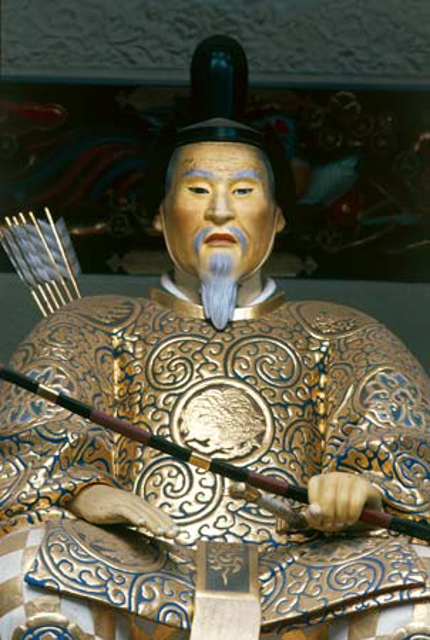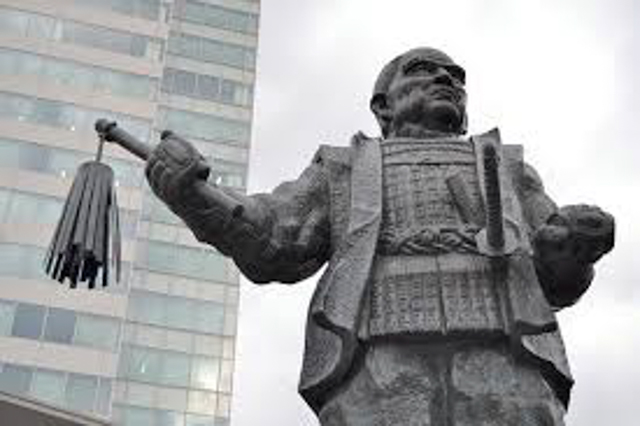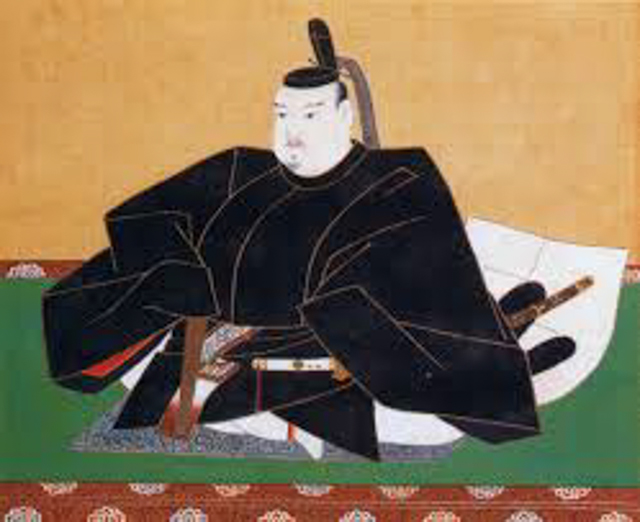One of the things we’ve discovered about Japan is that it would be very hard to understand Japan today without understanding a bit about its long and unique history and culture. Sometimes it’s hard to separate fact from legend, history from tradition, but here’s our short summary of the history of Japan for what it’s worth.

Oral tradition names Emperor Jimmu, a direct descendant of the Shinto sun goddess, as the first Emperor of Japan in 660 BC. Most historians, however, dismiss this early period as being beyond what history can actually know, and consider it legend until Emperor Kimmei. Emperor Kimmei (509–571 AD), is the first emperor for which contemporary historiography is able to assign verifiable dates. He is the 29th emperor if you’re counting from Jimmu, which the Japanese do, to get to a grand total of 137 emperors. The Imperial House of Japan is the oldest continuing hereditary monarchy in the world… that’s right, there is supposedly an unbroken bloodline back to the first emperor.
Emperor Akihito is currently the only remaining monarch in the world reigning under the title of “Emperor”. Since 1947, when the post-World War II constitution dissolved the Empire of Japan, the Emperor of Japan is a ceremonial monarch, and is the head of the Japanese Imperial Family; he is “the symbol of the state and of the unity of the people.”
In fact, Japanese Emperors have nearly always been controlled by external political forces, to varying degrees. Here’s a brief summary of the major periods in Japan’s history:
500-800: Yamaoto priest-chiefs establish control over the main island of Honshu. The country is greatly influenced by China and neighboring Korea, adopting Chinese forms of Buddhism, government and written language, gradually changing them to forms that were uniquely Japanese.
794-1185 (Heian Period): Capital moves from Nara to Heian (now Kyoto); Imperial court’s power declines; the real power was in the hands of the Fujiwara clan, a powerful aristocratic family who had intermarried with the imperial family. Beginning of the samurai warrior class.
1192 – 1868 (Edo Period): The shoguns, were the de facto rulers of Japan.
This period was dominated by civil wars. Finally, with the first Tokugawa shogun , unification of the country was mostly solidified in what is known as the Edo Period because Tokugawa’s administrative base was established in Edo (present-day Tokyo ). Shogun, by James Clavell, is loosely based on the showdown leading up to the Tokugawa’s reign, including Anjin-san in the book representing the real life English navigator, William Adams. Fifteen generations of of the Tokugawa family served as Shoguns and controlled Japan from 1600 to 1868.
Europeans first arrived in the 16th century, introducing guns and Christianity to the island. By the 17th century, Japan had enough of both and closed itself off from the outside world, except for limited trade allowed out of Nagasaki, mostly Dutch and Chinese.
In 1853, U.S. Commodore Matthew Perry arrived, demanding that Japan open itself to trade. Perry had been given specific instructions by President Fillmore to expand America’s trade relations in the Asian region and to acquire rights to establish coaling stations in ports along the Japanese coast or in the uninhabited islands around Japan. After leaving the Japanese with an ultimatum (via letter from President Fillmore) that if they chose to fight, the Americans would destroy them, he promised to return for a reply. Perry returned in February 1854 with twice as many ships, to find that the Japanese had prepared a treaty accepting virtually all the demands in Fillmore’s letter.
1868 – 1912: (Meiji Era) After a brief civil war in the 1860s over the handling of these foreign matters (the Boshin War), the last shogun resigned, and Emperor Meiji assumed control of the country. This is often called the Restoration of the Emperor. It is interesting to note that, throughout history the Emperor was mostly a figurehead and rarely held the governing power; however to the Japanese masses, he was believed to have descended from the gods, in fact, was considered to be a god.
Age of Imperialism: The dawn of the 20th century saw Japan rise to become the leading military power in Asia. Japan’s imperial ambitions led to war with China (which ceded Taiwan to Japan), Russia, and Korea, along with the invasions of Manchuria in 1931 and mainland China in 1937. The bombing of Pearl Harbor brought the U.S. into World War II (known as the “Pacific War” to the Japanese). Finally, on August 6 and 9, 1945, the world’s first atomic bombs devastated Hiroshima and Nagasaki and brought about a Japanese surrender.
According to the 2012 film Emperor, it was unclear how much authority and influence the Emperor (Hirohito) had in starting and continuing the aggressive actions of Japan, including Pearl Harbor, but he clearly took a stand to end the war after the bombings – at risk of his own life. Hirohito, concerned that the military leaders wouldn’t agree to the surrender, prepared a recording of himself announcing the decision to surrender, to ‘pave the way for a grand peace for all the generations to come by enduring the unendurable and suffering what is unsufferable’. Indeed, after the recording was made but before it was broadcast, an attempted military coup stormed the Imperial Palace in an unsuccessful attempt to find the recording and the Emperor. Many died in defense of both.
Our Japanese guides generally agreed with this portrayal, though they were split as to whether Hirohito should have been tried as a war criminal. The movie portrays that the U.S. thought maintenance of the revered Imperial leader was important for the rebuilding of this decimated country and people. As part of the overall package, the Emperor also agreed to declare to the Japanese people that he was mortal, i.e., not a living god as had been believed by the people for, well, all recorded time. (If this sounds bizarre for relatively recent history, read Nothing to Envy, about ‘modern’ North Korea.)
It is generally felt that General MacArthur (Supreme Commander of the Allied Powers) did a good job of helping Japan begin to rebuild. And rebuild they did. During the 1950s, Japan accomplished an economic miracle, transforming from an exhausted, occupied nation into an economic powerhouse in just a few decades. A hyper-inflated “bubble” economy built up during the overheated real-estate boom of the 1980s. By 1990, the bubble burst, Japan’s economy collapsed, and stock and real-estate priced plunged. Recovery has been very slow, with more than 20 years of stagnation. Wages are often still below pre-bubble levels.
Though people feel the economy is still sluggish and job prospects for young people anemic, the places we visited were bustling. Though poverty rates have been growing, we didn’t see slums or other such evidence. We didn’t see a single beggar. Time will tell whether Japan’s newer generations remake themselves, finding creativity, innovation and entrepreneurship in a country that has historically highly prized hierarchy, loyalty and rule-following.


